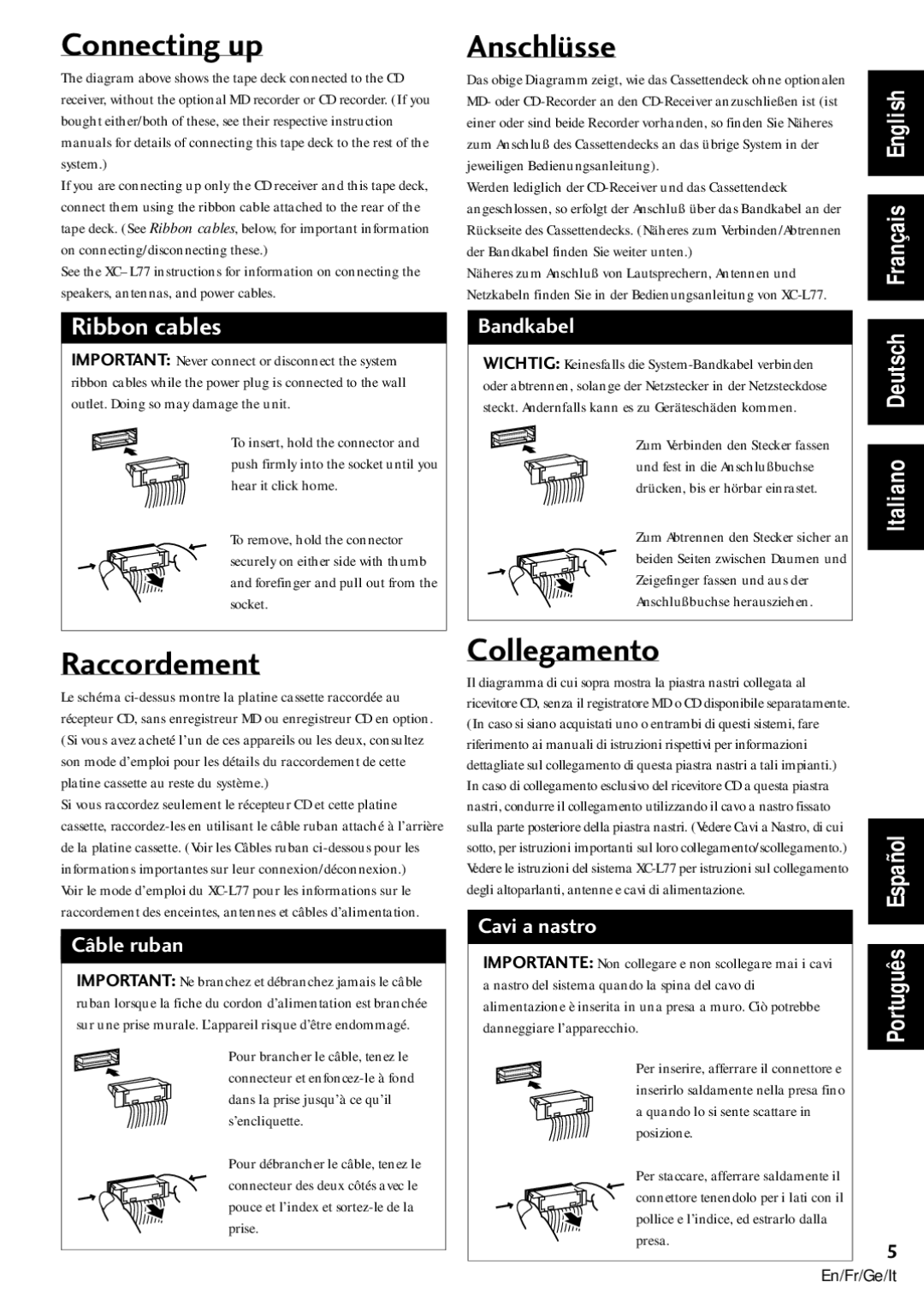CT-L77 specifications
The Pioneer CT-L77 is a remarkable cassette deck that exemplifies the high-quality audio equipment of the late 20th century. Released during the golden age of cassette technology, the CT-L77 represents a key advancement in tape playback and recording, targeting enthusiasts and audiophiles seeking premium performance.One of the defining features of the Pioneer CT-L77 is its dual-capstan design, which ensures superior tape transport stability. This architecture allows for precise tape movement, minimizing wow and flutter, and enabling consistent playback quality. The incorporation of a closed-loop system further enhances stability during cassette usage, making it an excellent choice for high-fidelity recordings.
The CT-L77 is equipped with advanced Dolby B and C noise reduction technologies. These systems significantly reduce background hiss, ensuring that audio playback remains clear and detailed, even at lower volume levels. This technology is especially beneficial for recordings where dynamic range is critical.
Another notable characteristic of the Pioneer CT-L77 is its use of high-quality metal and chrome tapes. The deck offers a variety of bias settings, allowing users to customize the playback to suit the type of tape being used. This feature is essential for audiophiles who strive for perfection in their recorded music.
The deck also features a well-designed user interface with clear indicators and controls for easy operation. The LED display provides information about tape transport functions, recording status, and Dolby settings, ensuring that users can monitor their recordings effortlessly.
In terms of build quality, the Pioneer CT-L77 is crafted with durability in mind. The robust chassis and premium components reflect Pioneer's commitment to creating long-lasting audio equipment.
Moreover, the CT-L77 includes a comprehensive range of playback features, such as programmable playback, interval repeat, and tape counter functions. These functionalities enhance user convenience, allowing for a streamlined listening experience.
In conclusion, the Pioneer CT-L77 cassette deck stands out as a stellar example of engineering excellence within the realm of audio equipment. Its dual-capstan design, advanced noise reduction technologies, user-friendly interface, and excellent build quality make it a coveted piece for collectors and music lovers alike, encapsulating the essence of the cassette era with outstanding performance.

